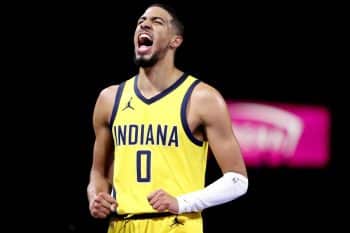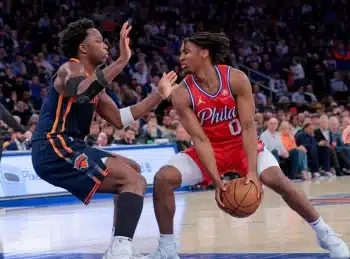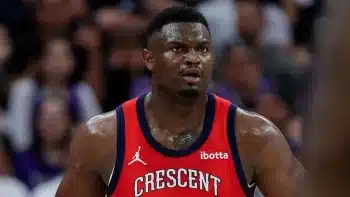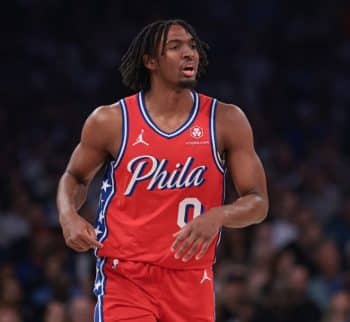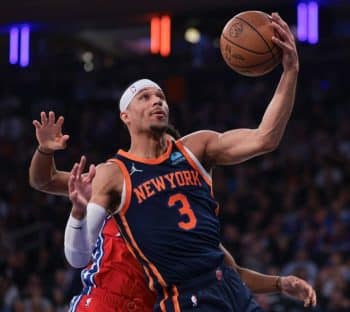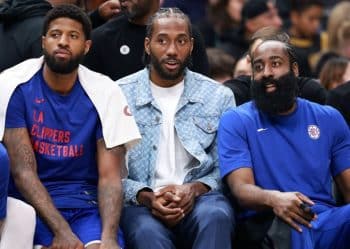NBA
NBA AM: What’s Next For The D-League?
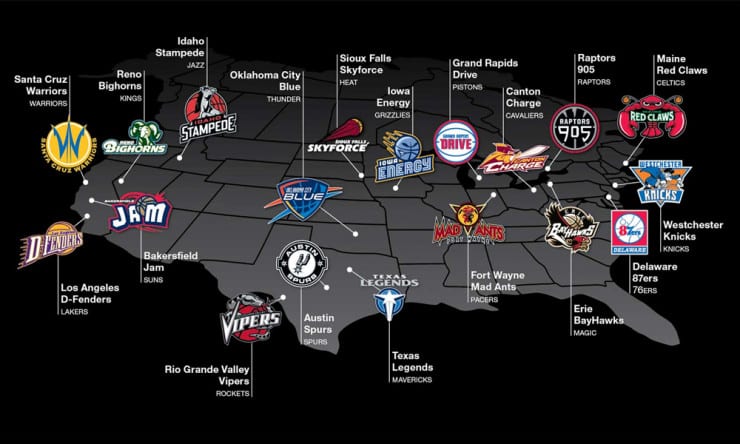
The Future Of The D-League: Last week the Indiana Pacers bought control of the last remaining “independent” D-League team, putting all 19 teams under direct operation control of a parent NBA team.
There are currently two types of controls in the D-League; direct ownership where the parent club owns everything and what’s dubbed as a hybrid arrangement, where the parent NBA teams controls and funds the basketball operations of the team, while another owner controls the business side.
There are currently eight teams involved in a hybrid arrangement: the Boston Celtics (Maine Red Claws), Detroit Pistons (Grand Rapids Drive), Houston Rockets (Rio Grande Valley Vipers), Memphis Grizzlies (Iowa Energy), Miami HEAT (Sioux Falls Skyforce), Orlando Magic (Erie BayHawks), Phoenix Suns (Bakersfield Jam) and Sacramento Kings (Reno Bighorns).
The remaining 11 teams have direct ownership: Indiana Pacers (Ft. Wayne Mad Ants), Cleveland Cavaliers (Canton Charge), Golden State Warriors (Santa Cruz Warriors), Los Angeles Lakers (L.A. D-Fenders), New York Knicks (Westchester Knicks), Oklahoma City Thunder (Oklahoma City Blue), Philadelphia 76ers (Delaware 87ers), San Antonio Spurs (Austin Spurs), Utah Jazz (Idaho Stampede) and Toronto Raptors (Raptors 905).
So with all the available teams now controlled in a “one-to-one” relationship, what’s next?
Expansion?
In the grand scheme, there is an eventuality to all 30 NBA teams having their own wholly controlled minor league team, however, there isn’t a huge rush from the D-League level to just pop up 11 more franchises. There are some logistics that still have to play out and over time complete coverage is more likely than not.
As the D-League has matured, there is a growing desire to have the minor league affiliated teams within a reasonable travel distance from the home team. This allows for easier transition back and forth for players, but also making it easier for executives and coaches to be part of the D-League process.
There are still some teams that do not fit into that category. Orlando’s franchise, the Erie Bayhawks, plays in Erie Insurance Arena, which is 1,091 miles from the Amway Center in Orlando. The Miami HEAT’s D-League team, the Sioux Falls Skyforce, plays in the Sanford Pentagon, which is 1,829 miles from AmericanAirlines Arena in Miami.
This is an item that the D-League would like to see evolve as expansion occurs, and it’s also an item that comes up when discussing expansion because not only is there a desire to keep teams closer to their parent teams, there are also travel costs in competing. The D-League does not have the travel budget their parent teams have and containing travel costs is a factor in the expansion discussion.
Sources close to the process expect more D-League teams next season. A new one for Toronto was added this year and with more funds coming into the NBA by way of the new media rights deal, there seems to be more appetite from NBA parent teams in spending the money to have their own team.
Sources close to the process peg the annual costs of running a D-League team at just around $2 million per season. While that’s not an insignificant number, the benefits of having a training ground for not only players, but for younger coaches and executives makes the cost a lot more palatable, especially as the D-League begins to play a bigger part in the media rights deal, which includes more coverage of the league and its games.
What Happens To The Others?
With all of the D-League teams now controlled by “one-to-one” relationships, there are 11 teams that do not have their own affiliation any longer. In response to that, the D-League instituted a flexible assignment system last year to help manage player allocation to the lone “independent” team and will use that same system going forward.
In essence, if one of the 11 teams without a D-League team wants to assign a player to the D-League, the league will make that player available to all of the teams. If a team does not volunteer to accept the player, The D-League will then assign the player to a team by use of a lottery system.
There are some interesting by-products of this plan.
Let’s say a team has a young player that’s not playing much and they want to explore trading that player to another team. They could assign that player to the D-League and an interested team could try him out in their D-League system, which is typically similar to the home team’s system before making a trade decision.
Players with less than three years’ experience can be assigned to the D-League without their consent. Players with four or more seasons can be assigned, but their consent is required.
The other by-product is the relationship some coaches have with other organizations. For example, Hawks Head Coach Mike Budenholzer, who is also President of Basketball Operations, has a long history with the San Antonio Spurs. The two teams run similar programs. The Hawks do not have a D-League team, but the Spurs do. The Hawks could assign their players with the idea of them getting experience with the Spurs team, the Austin Toros, rather than another team.
Now there are some wrinkles there in which more than one team could make claim to a player, but the assigning team has the right to choose which team their player lands on, so this could be an interesting player sharing solution for like-minded organizations.
Salary Increase?
The biggest impediment for the D-League’s growth currently is its salary structure. Like most minor leagues, the money available to players is very low compared to their major league counterparts. The D-League uses a tiered compensation system that’s based on experience.
Players with ample NBA experience fall into the A Tier, which pays roughly $25,500 per season. Players with some level of experience fall into the B Tier and earn roughly $19,000 per season. While inexperienced players, typically undrafted players, fall into the C Tier and earn roughly $13,000 per season.
In the grand scheme of professional sports salaries, those are insanely low numbers, especially when players can earn $75,000 to $150,000 playing internationally. To put those figures into perspective, Patric Young, who went undrafted in 2014 just signed a guaranteed two-year, $1.6 million deal with Olympiacos Piraeus. The deal pays him just north of $800,000 this year, or roughly 32 times the top of the scale in the D-League.
Sources close to the process in the D-League expect to see a change in D-League compensation as the league grows, so there is a sense things will improve.
Some NBA teams have figured out an interesting work around to get experienced players into their system using partially guaranteed NBA minimum deals as part of training camp.
For example, last season the Orlando Magic gave NBA minimum deals to Seth Curry, Peyton Siva and Kadeem Batts, all with partial guarantees. The agreement between the team and the players was that they would be cut and claimed by the Bayhawks. Curry and Batts’ guarantees were $150,000 each, while Siva received $100,000. All three were around the Magic for training camp, but did not participate and were cut and played out the season in Erie, collecting their full value from Orlando plus the salary allocated to them in the D-League.
NBA teams can sign an unlimited number of minimum salary deals, with only the guaranteed portion counting against the salary cap and luxury tax.
The Dallas Mavericks signed former Marquette stand out Jamil Wilson to a four-year minimum deal with only $50,000 guaranteed. The plan is for Wilson to come to camp with the Mavericks, but its far more likely he’ll be cut and play out the season with the Texas Legends in Frisco.
The concept of a partial guarantee on a camp deal in exchange for agreeing to play out the season in the D-League is increasing, so some of the pressure to adjust salaries may come down. However, there is a sense that even with teams getting smarter about how to pay for talent, the tiered system in the D-League is expected to go up as more teams and revenue come into the league.
The D-League schedule for the 2015-16 season was released on Friday. Each D-League teams plays a 50-game schedule. If you want to know more about the D-League, there is a great D-league FAQ on the league’s official website.
Metta Wants to Play, May Not Be With The Lakers: Metta World Peace, who many still think of as Ron Artest, has been working out in hopes of securing a roster spot in the NBA after spending last season abroad.
World Peace has been a regular at the Lakers practice facility and has been linked to a possible camp deal with the Lakers, something Laker General Manager Mitch Kupchak sort of down played to the media last week, admitting he had spoken with World Peace a number of times this off season.
“Me and Mitch have a cool relationship but we have not talked about me coming back to the Lakers,” World Peace told Mitch Abramson of the New York Daily News. “I call Mitch about other things. We just have a good relationship. Whether I come to the Lakers or not, me and Mitch would still be cool.”
World Peace said his agent has been reaching out to teams, but he’s not finding a lot of interest in a deal for World Peace. At this point, World Peace is unsure of where he’ll play next season, but is keeping himself in shape hoping for a spot in the NBA.
“I don’t really know, honestly. I work out. I’m still one of the best small forwards in the world but my career has been up and down. With my career being up and down, some teams are like, ‘Can we use Metta World Peace, where is he going to fit in? Is he going to be good for the rookies? Can he still play?’”
“I’m still one of the best small forwards in the world so that’s not a question. But the question is can I actually fit into a team and can a coach coach me? Those are realistic questions and it’s cool. I still train to be one of the best.”
World Peace said it was unlikely that he’d return to international basketball, that his goal was another NBA roster spot. As of now, it does not look like a Laker’s job is coming, but World Peace says he’ll be ready if a team wants to sign him.
More Twitter: Make sure you are following all of our guys on Twitter to ensure you are getting the very latest from our team: @stevekylerNBA, @AlexKennedyNBA, @LangGreene, @EricPincus, @joelbrigham, @SusanBible @TommyBeer, @MokeHamilton, @JCameratoNBA, @iamdpick, @jblancartenba and @CodyTaylorNBA .
